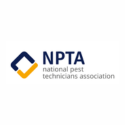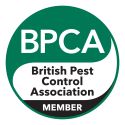Discovering a wasp nest near your home can be a distressing experience, especially for those with allergies. While a previous wasp nest doesn’t guarantee a recurrence, understanding wasp behaviour and implementing preventative measures is crucial. If you suspect a wasp nest is present, we recommend seeking professional pest control advice. Here are our tips to help you deter wasps from nesting on your property.
It’s a common misconception that wasps return to the same nest year after year, in fact wasps do not reuse old nests. However, if your property consistently provides ideal nesting conditions, you may experience recurring wasp activity. Therefore, understanding where wasps prefer to build their nests is key to prevention.
During early spring, queen wasps emerge from hibernation and seek sheltered locations to establish their nests. Regularly inspect these areas around your home:
Lofts and attics – Warm, undisturbed spaces are highly attractive.
Sheds and garages – These structures offer protection from the elements.
Eaves and roof spaces – Overhangs and roof cavities provide ideal shelter.
Wall cavities and air bricks – Small openings can provide access to hidden nesting sites.
Bushes and trees – Dense foliage offers natural cover.
Under decking and porches – Shaded areas provide an ideal nesting place.
Look for early signs of nest construction, such as a light-coloured, paper-like structure. Early detection allows for easier and safer removal, as nests can rapidly grow from the size of a golf ball to a football or larger by summertime.
Wasps are drawn to readily available food sources. To deter them, take these steps:
Food storage – Store food in sealed containers and avoid leaving food exposed on countertops.
Waste management – Dispose of food waste promptly and use sealed bins with secure lids.
Outdoor dining – Clean up spills and crumbs immediately after outdoor meals.
Sweet substances -Avoid leaving sugary drinks and fruits exposed outdoors.
By minimising food sources, you make your property less appealing to wasps.
A wasp can squeeze through small holes or cracks in walls and eaves to nest in your loft, shed or garage. Check your property carefully and seal up any possible gaps you can find. You can also install mesh screens over vents and air bricks. These measures not only prevent wasps but also deter other pests like rodents.
While these tips can significantly reduce the risk of wasp nests, professional pest control services offer comprehensive solutions.
Identify and remove nests – Safely remove existing nests and ensure complete elimination.
Provide preventative treatments – Apply treatments to deter wasps from nesting.
Offer expert advice – Provide tailored advice based on your property’s specific needs.
If you have already found a wasp see – Wasp Nest Removal – Your Guide to Safe & Effective Removal.






